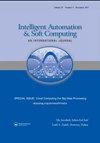A Deep Learning to Distinguish COVID-19 from Others Pneumonia Cases
IF 2
4区 计算机科学
Q2 Computer Science
引用次数: 3
Abstract
A new virus called SARS-CoV-2 appeared at the end of space 2019 in Wuhan, China. This virus immediately spread throughout the world due to its highly contagious nature. Moreover, SARS-CoV-2 has changed the way of our life and has caused a huge economic and public health disaster. Therefore, it is urgent to identify positive cases as soon as possible and treat them as isolated. Automatic detection of viruses using computer vision and machine learning will be a valuable contribution to detecting and limiting the spread of this epidemic. The delay introduction of X-ray technology as diagnostic tool limited our ability to distinguish COVID-19 from other pneumonia cases. These images can be feed into a machine learning system that can be trained to detect lung infections, which can arise in acute pneumonia. However, some efforts attempt to detect SARS-CoV-2 using binary data and such combinations, which may leading to confusion. Indeed, in this case, the classifier's training minimizes the intra-class similarity between pneumonia in COVID-19 and typical pneumonia. Due to the fact that in addition to SARS-CoV-2 pneumonia, there are two other common types: viral and bacterial pneumonia. They all appear in similar shapes, thus making them difficult to distinguish. This research proposed a deep multi-layered classification of pneumonia based on a neural network using chest X-ray images. The experiment was conducted using the combination of two images from an open-source dataset collected by Cohen GP and Kagel. The data consists of 4 categories: normal pneumonia, bacterial pneumonia, viral pneumonia, and COVID19, for 2,433 images. We considered two architectures: Xception and ResNet50. In addition, a comparison was made between the two models. The pre-trained Xception model in 20 epochs provided a classification accuracy of 86%.一种区分COVID-19和其他肺炎病例的深度学习
2019年底,一种名为SARS-CoV-2的新病毒出现在中国武汉。由于这种病毒的高传染性,它立即在世界范围内传播。此外,新冠肺炎改变了我们的生活方式,造成了巨大的经济灾难和公共卫生灾难。因此,迫切需要尽快确定阳性病例并将其隔离处理。使用计算机视觉和机器学习自动检测病毒将对检测和限制这种流行病的传播做出宝贵贡献。x射线诊断技术的延迟引入限制了我们将COVID-19与其他肺炎病例区分开来的能力。这些图像可以输入机器学习系统,该系统可以被训练来检测肺部感染,这可能会导致急性肺炎。然而,一些努力试图使用二进制数据和此类组合来检测SARS-CoV-2,这可能会导致混淆。事实上,在这种情况下,分类器的训练最小化了COVID-19肺炎与典型肺炎之间的类内相似性。由于除了SARS-CoV-2肺炎之外,还有另外两种常见类型:病毒性肺炎和细菌性肺炎。它们都以相似的形状出现,因此很难区分。本研究提出了一种基于神经网络的基于胸部x线图像的肺炎深度多层分类方法。实验使用了Cohen GP和Kagel收集的开源数据集中的两张图像的组合。数据包括4类:正常肺炎、细菌性肺炎、病毒性肺炎和covid - 19,共2433张图像。我们考虑了两种架构:Xception和ResNet50。此外,还对两种模型进行了比较。在20个epoch中预训练的异常模型提供了86%的分类准确率。
本文章由计算机程序翻译,如有差异,请以英文原文为准。
求助全文
约1分钟内获得全文
求助全文
来源期刊

Intelligent Automation and Soft Computing
工程技术-计算机:人工智能
CiteScore
3.50
自引率
10.00%
发文量
429
审稿时长
10.8 months
期刊介绍:
An International Journal seeks to provide a common forum for the dissemination of accurate results about the world of intelligent automation, artificial intelligence, computer science, control, intelligent data science, modeling and systems engineering. It is intended that the articles published in the journal will encompass both the short and the long term effects of soft computing and other related fields such as robotics, control, computer, vision, speech recognition, pattern recognition, data mining, big data, data analytics, machine intelligence, cyber security and deep learning. It further hopes it will address the existing and emerging relationships between automation, systems engineering, system of systems engineering and soft computing. The journal will publish original and survey papers on artificial intelligence, intelligent automation and computer engineering with an emphasis on current and potential applications of soft computing. It will have a broad interest in all engineering disciplines, computer science, and related technological fields such as medicine, biology operations research, technology management, agriculture and information technology.
 求助内容:
求助内容: 应助结果提醒方式:
应助结果提醒方式:


